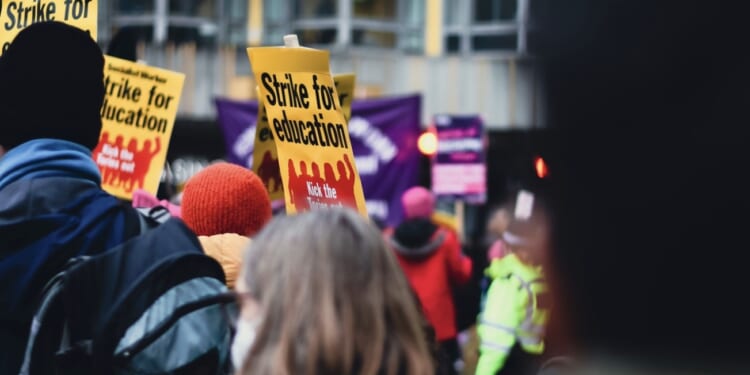The Minneapolis teachers’ union has set a strike authorization vote if no agreement on the 2025-27 contract is reached during today’s mediation session, as contract negotiations with the Minneapolis Public Schools district are currently at an impasse.
If this scenario sounds familiar, it is because you have seen this movie before. Strike threats are not new to the district.
In March 2022, over 30,000 Minneapolis students were shut out of their classrooms for 14 instructional days as the union went on strike over its contract proposals that were not within the district’s means. The union won, and the district agreed to unsustainable pay increases and class size caps in that deal. Former Superintendent Ed Graff knew the contract was unsustainable the minute he signed it, and subsequently announced his resignation. In April 2024, the district and union agreed on a contract right before a strike-authorization vote, narrowly avoiding a walkout. The terms of the agreement, though, included significant labor cost increases that put more strain on an already giant fiscal hole.
The district’s financial struggles are also not a new problem. Even back in 2020, when the legislature allocated more than half a billion in new education money, the district was $27.6 million in the red.
Now facing a projected budget shortfall of approximately $75 million for the 2025-26 school year, the district could once again face pressure from the union to increase labor costs that would deepen its deficit.
As reported by KSTP, part of what union leadership is asking for is smaller classroom sizes and higher wages.
The union is asking for classroom caps that are enforceable — for instance, right now kindergarten classes are supposed to be capped at 22 and the union is asking for 20. MFE [Minneapolis Federation of Educators] is also asking for pay increases to stay competitive with comparable districts. When negotiations began last spring it was proposing a 7% increase for teachers the first year, 6% in the second, as well as a 12% increase for education support professionals in the first year and a 10% in the second.
Because of how union salary schedules work within collective bargaining agreements, these increases are in addition to the pay increases already built into the union’s salary formula.
Commonly called the “steps and lanes” progression, pay increases are built into the salary schedule for the first 20-or-so years of a teacher’s career. The “steps” in a teacher salary schedule are the number of years a teacher has been teaching, and the “lanes” are the level of education the teacher has. Under union salary schedules, teachers earn automatic raises for each additional year of experience up to the top of the scale and can also earn more money by pursuing additional education credits and degrees.
As a result, a school district’s salary costs rise every year. This automatic increase gets paired with whatever increase to the base salary the union negotiates with the district. According to Minnesota’s Professional Educator Licensing and Standards Board (PELSB), the average teacher salary in the Minneapolis district was $82,859 for the 2024-25 school year.
This is not to say that teachers don’t have a right to ask the school district for higher wages and make their case to taxpayers, parents, and the school board. It is important, though, to understand how salary increases work under the union’s salary schedule, particularly for transparency purposes.
According to a spokesperson for the district, leadership hopes to reach a “fair, student-centered” agreement with the union that “ensures the district can thrive” even though their “budget is tighter than ever due to the historic underfunding of public education.”
Minnesota Department of Education revenue reports for Minneapolis Public Schools show total revenue for the district over the last decade (FY 2014 to FY 2024) is up over 34 percent, exceeding inflation by 1.6 percent over that time period, or 0.2 percent per year. Students served in the district (average daily membership) decreased by over 20 percent within that same timeframe.










